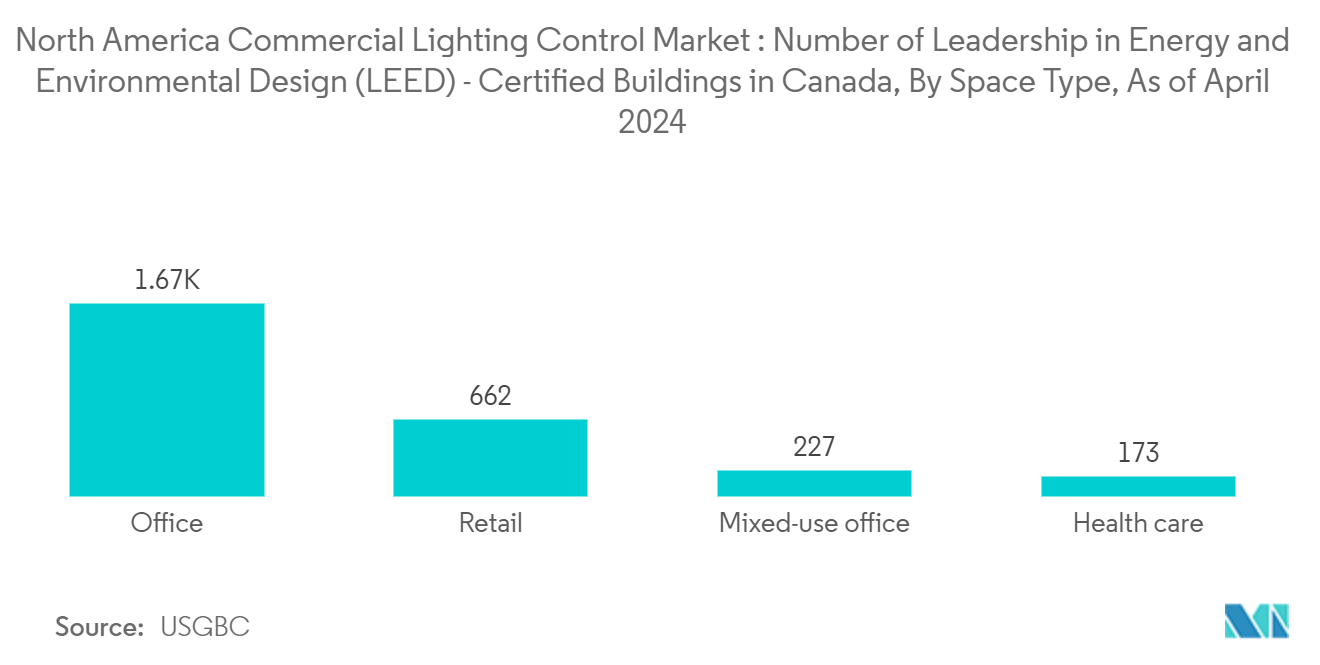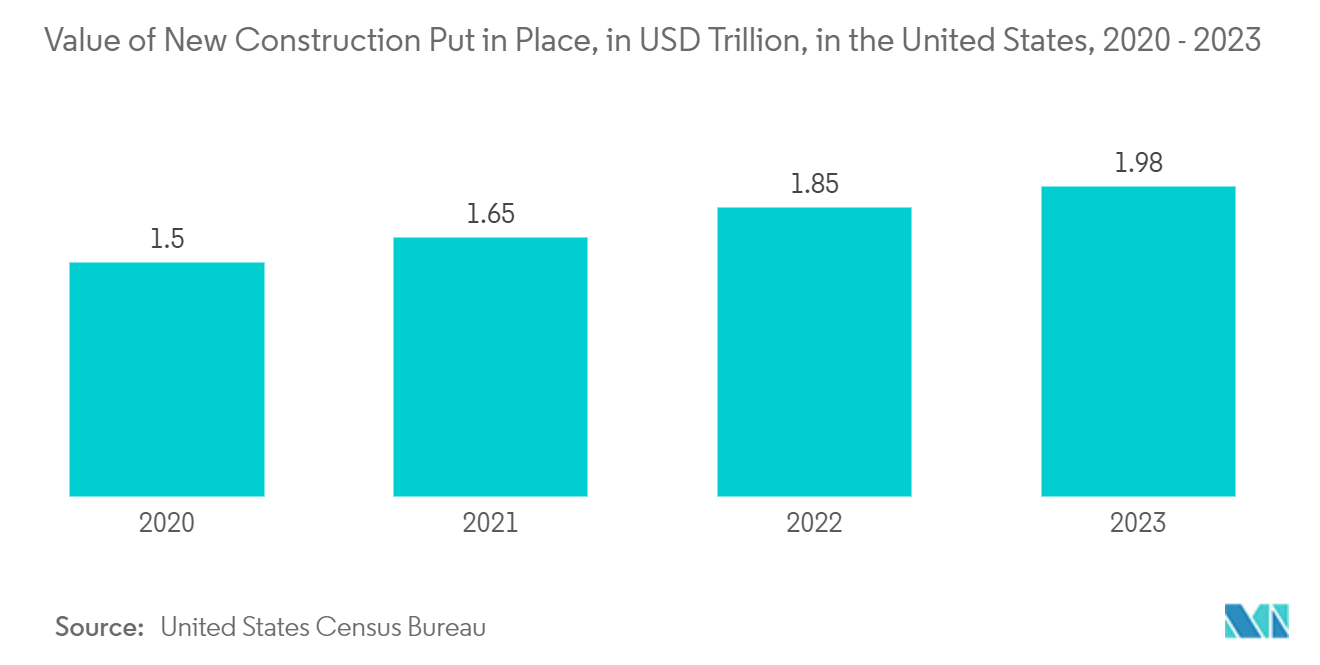Market Trends of North America Commercial Lighting Control Industry
Wireless Communication Protocol Segment is Expected to Grow Significantly
- Wireless Lighting Control devices are gaining popularity for commercial applications in the region. These devices use wireless lighting technology to control and monitor lighting infrastructure, which in many ways is more advantageous than traditional wired systems.
- Wireless lighting control is a device or system that uses radio frequency signals to communicate with other Smart Light elements in a network environment. This allows users to monitor different lighting systems on their mobile devices, which means there is no need for the physical interconnection of wires between one set of lights. This implies the need for hardwiring control devices is eliminated, guaranteeing simple installation and maintenance. In addition, without requiring any modification to the architecture or construction of new electrical pathways, light control platforms may be easily installed in current infrastructures. This is the primary reason for the growing popularity of wireless lighting control systems for regional commercial setups.
- Energy efficiency is an additional benefit of wireless, intelligent lighting controls. In the case of unoccupied rooms, wireless devices can be configured to shut down the lights, thereby reducing energy consumption automatically. To allow for better monitoring and reporting of energy consumption, it can also be complemented by Building Management Systems to identify areas in which energy savings could be achieved. In addition, eligibility for energy codes, rebates, and tax breaks may be facilitated by this. Also, according to the GSMA Intelligence, North America is expected to have approximately 1.4 billion new intelligent commercial buildings with Internet of Things connections during (2018-2025), which will concurrently drive wireless communication technology.
- A wide range of devices, including motion and light sensors, dimmers, wireless switches, LED drivers and lamps, bridges, luminaire controllers, and gateways that allow connections to existing building management systems, can be connected through a well-functioning lighting control network. These components shall be combined to provide the necessary means of efficient, remotely controlled operation of daylight harvesting strategies, occupancy indicators, and energy savings scenarios in a given space.
- Bluetooth mesh networking, which could transform the promise of intelligent services based on data in a building into a reality, has emerged as an efficient and reliable solution for commercial lighting control. The mesh of Bluetooth can be used to create a vast network of devices. It is most suitable for management, automation systems, and monitoring where thousands of devices need to communicate with one another in such a way as to ensure the highest degree of performance, reliability, and security. One of the use cases that have been rapidly adopted by Bluetooth mesh is advanced commercial lighting control systems.

United States is Expected to Witness Significant Growth
- There are multiple benefits of commercial lighting controls. The United States Department of Energy estimates that about 40% of energy consumption is generated by lighting installations in commercial buildings. According to the Energy Department, almost 30% is spent on illuminating areas which are not used at all. As a result, it is the country's fifth most significant energy use. Such cases force the government to take the necessary initiatives to control energy usage. This might play an essential role in the market growth.
- Lighting controls such as LED lighting are now widely used in various applications, ranging from small keychains to flood lighting in football stadiums. The United States Department of Energy anticipates that the energy efficiency of light sources will continue to advance through 2050, leading to a decrease in environmental impact and operational expenses.
- Retail outlets, office buildings, and public sector buildings, such as government-owned properties, are increasingly adopting LED technology on a large scale to slice down on energy consumption and improve energy efficiency. According to the DOE (Department of Energy), LED is considered a very efficient lighting technology and can significantly alter the future of lighting in the United States. The widespread adoption of LED lighting could lead to substantial energy savings in the United States. It is projected that by 2035, most lighting systems will utilize LED technology, thus driving the market's growth.
- Moreover, the major players in the country are focusing on collaborations and partnerships with other leaders to develop advanced hardware that caters to the market. For instance, in October 2023, Signify's portfolio was strengthened by adding ULT (Universal Lighting Technologies) product designs, patents, and trade names. For many years, Signify's Advance brand has been a competitor of ULT in product categories such as LED drivers, LED modules, and fluorescent ballasts. Acquiring patents and product designs in these areas is a strategic decision that could provide lasting advantages for Signify and Advance.


